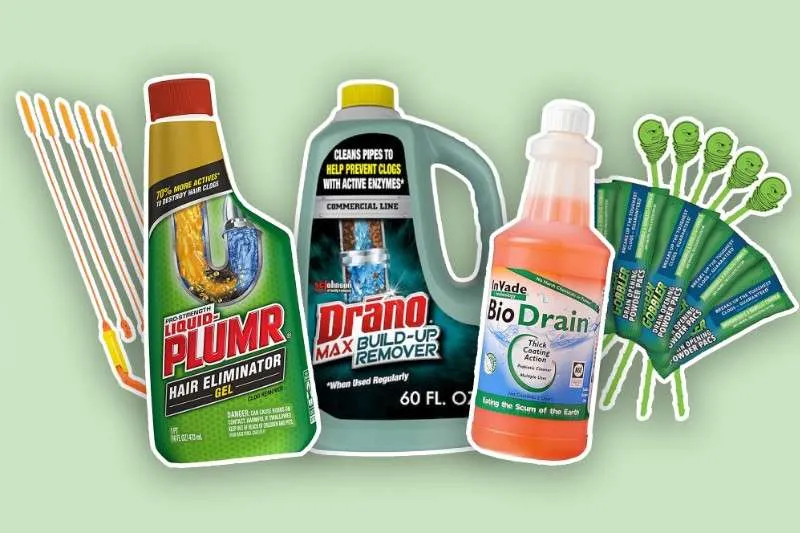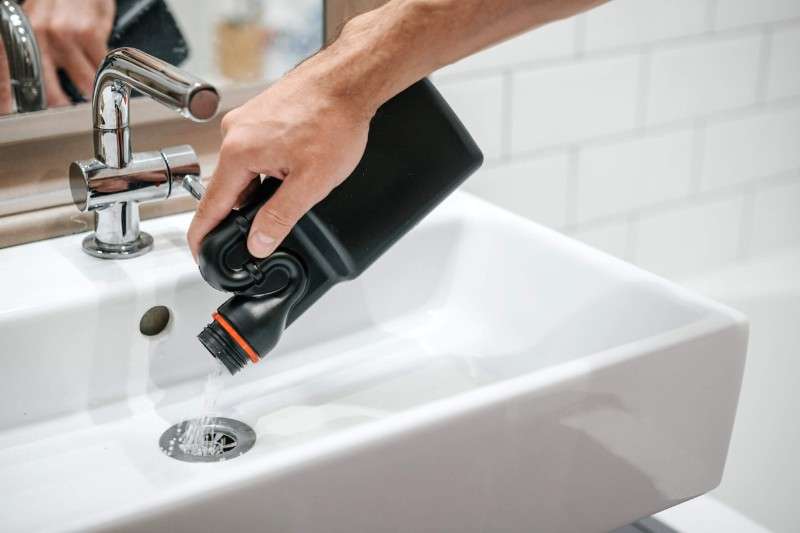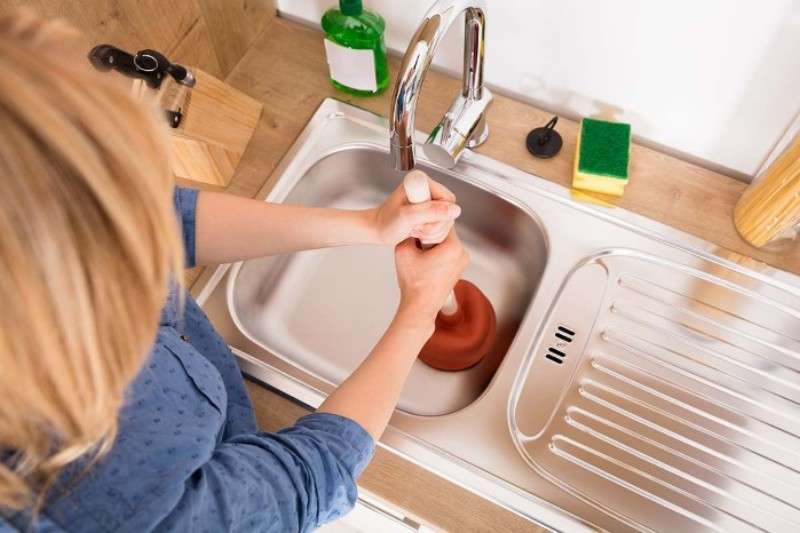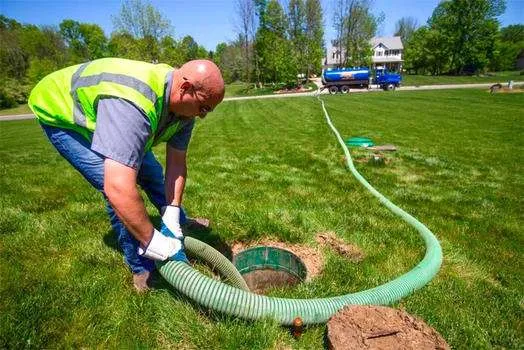If you’re a homeowner or business owner with an aerobic septic system, keeping it well-maintained is essential for long-term performance. Drain cleaners are an important part of any standard septic maintenance routine, but not all drain cleaner products are compatible with aerobic systems.
You must choose a safe and effective cleaning product specifically designed for aerobic septics—otherwise, you could potentially cause damage to the tank or other parts of your wastewater system.
In this blog post, we’ll explain exactly why it’s so important to use only the best quality, effectively formulated drain cleaner when dealing with an aerobic septic system—so keep reading if you want your drainage issues taken care of without putting your plumbing at risk!
Introduction to Aerobic Septic Systems: Basic Overview and Functioning
Aerobic septic systems effectively and efficiently manage wastewater from homes, businesses, and other establishments. They are often used as an alternative to traditional septic tanks. An aerobic septic system relies on mechanical, biological, and chemical reaction to break down solid waste and material and purify the effluent for discharge into the environment.
Aerobic septic systems comprise a tank, an aerator, and a pump chamber. The tank collects the wastewater that enters and holds it for some time to allow solids to settle out. This is necessary for the material to be broken down into smaller particles.
The aerator injects oxygen into the wastewater, creating an environment where beneficial bacteria can thrive and break down organic matter. Finally, hot water from the pump chamber pumps effluent out to the drain field, which is filtered before being discharged into the environment.
What is Drain Cleaner: A Brief Introduction to the Product

Drain cleaner is a product used to clear clogged drains or slow-running drains. It can come in various forms, such as liquid, powder, gels, tablets, and sticks. Many drain cleaners contain caustic soda (sodium hydroxide) or acidic solutions (such as sulfuric acid), which react with the grease in the clogged drain to clear the clog.
Can Drain Cleaner be Used in Aerobic Septic Systems? What the Manufacturer Claims
The product manufacturer often provides specific instructions on using the drain cleaner in aerobic septic systems. Generally, they recommend that you only use a small amount of the product and never pour it directly into the system.
It is important to follow these instructions carefully, as using too much of the product could damage your septic system or cause it to malfunction. Additionally, some drain cleaners may contain chemicals unsafe for use in aerobic septic systems.
The Risks of Using Harsh Chemicals in Aerobic Septic Systems
The risks of using harsh chemicals in aerobic septic systems are numerous. Some of these include:
- Corroding or damaging pipes, tanks, and other system components.
- Disrupting the delicate balance of oxygen and bacteria required for effective processing.
- Killing off beneficial bacteria in the septic tank leads to a buildup of solids that can clog or damage pipes and valves.
- Causing odor and seepage problems due to disrupting the system’s processes.
- Poisoning groundwater by leaching it from the septic tank or drain field.
- Creating hazardous waste products that can be harmful if not disposed of properly.
- Potential for environmental contamination due to improper disposal of drain cleaner.
- The possibility of releasing toxic chemicals into the environment when discharged from your septic tank.
- Damage to the drain field and other septic system components due to chemical corrosion.
Ingredients in Drain Cleaner: Are They Safe for Aerobic Septic Systems?

When using drain cleaner for an aerobic septic system, it is important to check the ingredients list on the product label.
Some of the more common active ingredients found in drain cleaners safe for use with aerobic septic systems include Lactic acid, –Citric acid, and -Sodium hydroxide.
Not all drain cleaners are safe for aerobic septic systems, so thoroughly researching the product before using it is best. Additionally, always follow the manufacturer’s instructions when using any drain cleaner.
Look for products labeled as ‘safe for aerobic septic systems.’ These will contain safe ingredients for the system and will not damage it.
Alternatives to Drain Cleaner: Other Safe Methods for Cleaning Drains in Aerobic Septic Systems
There are alternatives to using chemical drain cleaners used in aerobic septic systems.
One option is to use natural solutions, such as vinegar and baking soda, and vinegar or pour boiling water. When baking soda and vinegar are combined, a chemical reaction occurs that creates carbonic acid, which immediately decomposes into carbon dioxide gas. This can be effective for clearing simple clogs.
Other methods include plunging or snaking the drain or using a sewer machine with a cutting head to the drain manually break down solid blockages.
Pouring 1/4 cup of baking soda and 1/2 cup of vinegar down a drain will cause a fizzing reaction, like a science experiment, that unclogs drains.
Ensuring the drain system is regularly maintained and inspected for potential problems is also important. Regular inspections can help identify issues before they become a major problem, saving time and money by avoiding costly repairs or replacements.
Best Practices for Maintaining Aerobic Septic Systems: Tips for Keeping Your System Healthy
To maintain an aerobic septic system and ensure it runs smoothly, a few best practices should be followed:
- Has the septic tank been inspected regularly by a professional
- Pump out the septic tank at least once every three to five years.
- Use only safe products and ingredients designed for use in aerobic systems. This includes drain cleaners labeled as safe for aerobic septic systems.
- Avoid pouring fats, oils, and grease down the drain.
- Repair any plumbing issues promptly to prevent further damage.
- Install water-saving devices where possible to reduce wastewater output.
By following these tips and using drain cleaner safely in an aerobic septic system, homeowners can ensure their system is well-maintained and healthy. Doing so will help to avoid serious problems in the long run, saving time and money.
FAQs
Can you use a drain cleaner in an aerobic septic system?
The short answer is yes. However, using a drain cleaner safe for aerobic septic systems is important.
Can you use Drano with an aerobic septic system?
No. Drano and other similar commercial drain cleaners are not designed for use in aerobic septic systems and could cause significant damage to the system if used.
What kind of drain cleaner can I use with a septic tank?
Using only a drain cleaner specifically designed for septic tank systems. Look for products labeled “drain cleaner safe for aerobic septic” or similar, and follow the manufacturer’s instructions carefully. Avoid harsh chemicals or acidic cleaners, which could damage your system and contaminate your home’s drinking water.
Is Liquid Plumber safe for aerobic septic systems?
Yes. Liquid Plumber is a safe option for aerobic septic systems if you carefully follow the manufacturer’s instructions.
What is a septic-safe alternative to Drano?
Bio-Clean is a popular septic-safe alternative that removes grease and other debris from your plumbing system. Bio-Clean is safe for aerobic and anaerobic septic systems, so it can be used without fear of damaging or contaminating drinking water. Additionally, Bio-Clean contains natural bacteria and enzymes that break down organic waste, helping to keep your system clear and functioning properly.
Can you use Drano Max gel in a septic system?
No. Drano Max gel should never be used in septic systems, as it contains high concentrations of acids and caustic chemicals that can damage the system and contaminate drinking water. It is important to only use drain cleaner safe for aerobic septic systems in a septic tank.
Is OxiClean safe for aerobic septic systems?
Yes. OxiClean is safe for aerobic septic systems if you carefully follow the manufacturer’s instructions. However, it is important to note that OxiClean can cause staining in colored fixtures, so it should not be used with those materials. OxiClean should never be mixed with bleach or other cleaning products, which could create dangerous fumes.
Can you pour vinegar down the drain if you have a septic tank?
Yes. Vinegar is safe for septic tanks and can be used to clean and deodorize drains. However, it is important to note that vinegar should not be mixed with other cleaning products, as this could create dangerous fumes.
Additionally, vinegar can damage certain materials if left on for too long, so it should never be used on colored fixtures.
Conclusion
Chemical drain cleaner is not recommended for maintaining and upkeep aerobic septic systems. Harsh chemicals in the drain cleaners’ ingredients can damage an aerobic septic tank and its components. Although some manufacturers claim that certain drain cleaners may be safe to use in their products, it should be taken with a grain of salt. It is best to avoid products with harsh chemicals or acidic components when using your aerobic septic system.


